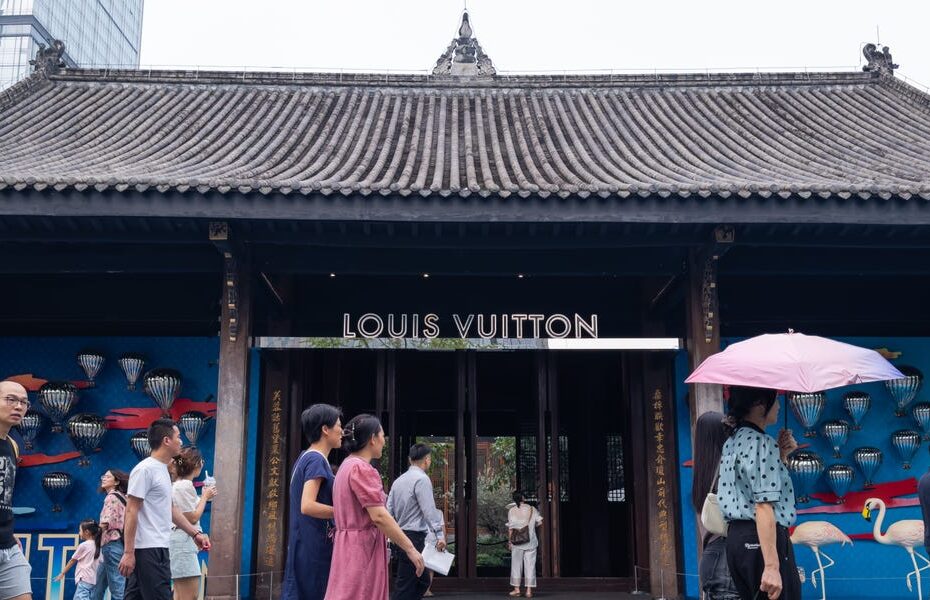- LVMH said sales dropped during the third quarter, with revenue down double digits in China.
- The company acts as a bellwether for the luxury industry, which is expected to continue to struggle.
- Despite the tough macroeconomic environment, there are bright spots in the market.
The luxury slump isn’t going anywhere — and the fashion and leather goods houses of the world should beware.
LVMH, the largest of the luxury conglomerates, announced its third-quarter earnings this week, and the results were grim. Revenue was down 3% at the Louis Vuitton owner, and for the first time since the pandemic, sales in the company’s fashion and leather goods sector, its largest, fell. Its other sectors — watches and jewelry, wine and spirits, and perfume and cosmetics — missed analysts’ estimates, and the company’s stock dropped.
Salvatore Ferragamo, which also reported earnings this week, had an even steeper sales decline.
Word on the Street is that things may get worse for the sector before they get better.
“We see a challenging backdrop for luxury consumption and expect a difficult six months ahead,” Goldman Sachs analysts wrote in a note following LVMH’s earnings call.
Over the next week, Kering, the owner of Gucci and Balenciaga, and Hermès will announce their earnings. Richemont, Moncler, and Burberry will follow.
In some ways, the poor showing may have been inevitable.
“This is largely cyclical, and right now we’re kind of in the trough or valley, so there is a fair amount of weathering that needs to take place on an industry-wide basis,” Sky Canaves, a principal analyst at EMARKETER, a sister company of Business Insider, said.
Luxury has had its ups and downs before and was riding a particularly — and perhaps artificially — high high fueled by a pandemic bump in spending. Consumers had savings and stimulus checks and nowhere to go, so they spent extra cash on bags, wallets, and the like.
While economic uncertainty has affected countries worldwide in recent years, a property crisis and high youth unemployment rates in China, one of the world’s biggest luxury markets, have hit the region particularly hard. LVMH sales in Asia, excluding Japan, fell 16% year-over-year for the quarter.
“Consumer confidence in mainland China today is back in line with the all-time low reached during COVID,” LVMH’s chief financial officer, Jean-Jacques Guiony, told analysts during its earnings call.
He added that it’s too early to tell if the country’s stimulus package or the recent national holiday would boost sales.
While personal luxury sales in China grew by more than 37% each year from 2019 through 2021, that annual growth is not expected to hit more than 4.2% through 2028, according to EMARKETER data.
How brands can bounce back
Still, the contraction in luxury spending may not have had to be as sharp as it was, regardless of the macroeconomic conditions. There are levers that brands can pull to hamper their losses — or add to them.
“The big question is whether it is only a weakness in consumer confidence that is responsible for the slowdown in spending or whether there are some more structural issues,” Adam Cochrane, a retail and luxury equity analyst at Deutsche Bank, told BI over email.
Pricing, for example, is well within companies’ control, and some have been too liberal with increases. Houses like Louis Vuitton and Chanel have more than doubled the prices of their signature bags — the Never Full and Classic Flap, respectively — over the past decade, and the brands have accelerated price hikes since 2020, turning off customers, according to data from Sotheby’s.
Hermès, meanwhile, has raised prices more moderately.
More conservative increases appeal to customers, who may be turned off from buying a product that they could have bought five years ago at a significantly lower price, Canaves said.
LVMH, for its part, defended its price hikes. “Do you really think that if we had not increased prices the way we have done, we would be doing double-digit [growth] today? I really don’t think so,” Guiony said.
Birkin-maker Hermès, which has consistently outperformed its luxury rivals this year, has also been smart about expanding product offerings slowly and intentionally. It has largely relied on an affluent consumer base rather than the aspirational customers that helped fuel growth at Louis Vuitton or Gucci. Those aspirational customers are the first to go when the economy gets choppy.
There are some other bright spots.
Sales in LVMH’s jewelry and watch business only fell 4%, and the “Tiffany rebrand is being well received,” Deutsche Bank’s Cochrane wrote in his note. That may mean that Richemont, the owner of Cartier, will have “less negative” results, he said.
Brunello Cucinelli, the Italian house best known for its cashmere, reported increased revenue in the third quarter, including in China.
Moving forward, brands that innovate more may fare better.
EMARKETER’s Canaves pointed to the collaborations and moves toward streetwear that helped some brands emerge from the last luxury slump. This time around, she said, labels may turn to experiences, like hospitality and services, to appeal to consumers.
Louis Vuitton sells everything “from chocolates to bespoke jewelry,” HSBC’s Erwan Rambourg wrote in a note earlier this month. Earlier this year, LVMH made headlines when it purchased the Paris restaurant Chez L’Ami Louis.
Of course, any expansion into new categories should not take attention from handbags and clothing, the revenue drivers of luxury brands.
“Time is ripe for brands to start taking those creative risks and laying the groundwork for when the consumer does come back and seek out the opportunities,” Canaves said.
